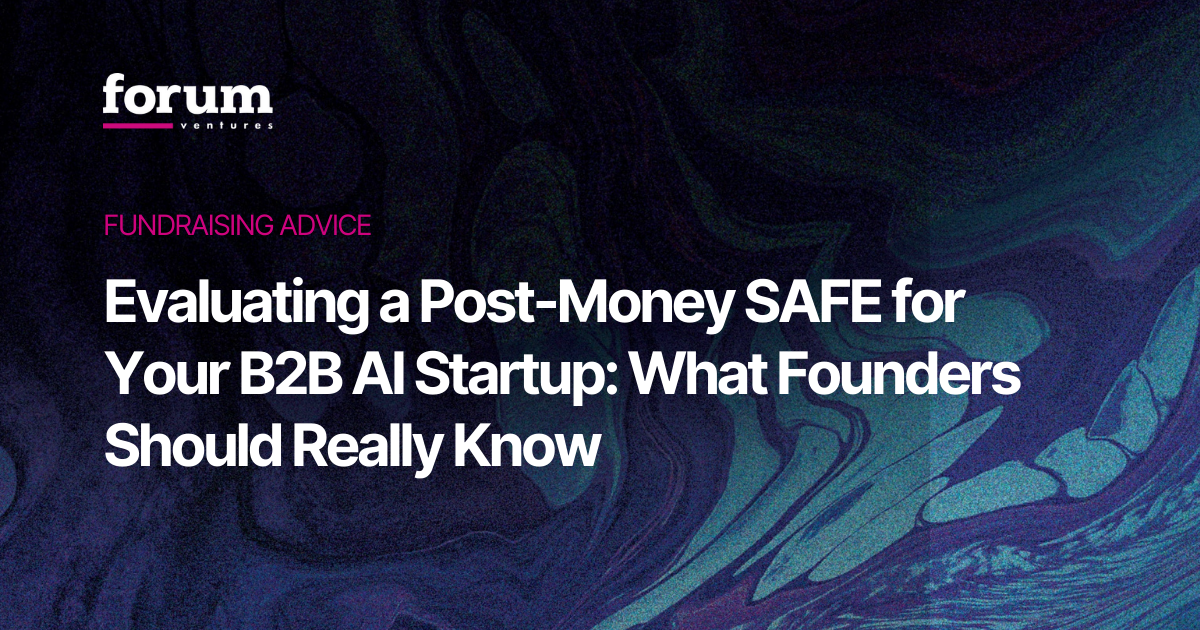In the middle of a fundraising round, being a founder is one of the hardest jobs in the world. You’re laser focused on the details of building your company, and at the same time you need to explain your vision and high-level business plans to potential investors. This leads to a problem that I tend to see again and again as a Managing Director at Forum Ventures: founders talk through their thoughts (“speaking to think”) instead of answering deliberately (“thinking to speak”).
Many founders come back to me after their investor meetings and feel anxious about how the meeting went. They feel like they didn’t get their point across, or they forgot something important, or that their business simply didn’t resonate well with the investors. And to be honest, all of these things likely happened if they took the speak to think approach.
There’s a framework I want to share here called the AEE (Answer, Explain, Example) that founders can use when talking to investors that will help them get out of the weeds and straight to the point. The framework also cuts across different communication styles so that you will resonate with listeners of all learning styles.
When investors get tactical, founders need to stay clear
You should be excited when a VC asks tactical and specific questions. This means they are intrigued, interested, and are vetting you for a potential investment. Don’t take this as a guarantee of course, but it’s a very good sign.
However, just because they’re getting tactical and specific, this isn’t an invitation to get bogged down with details and over-explain. While you’ll need to answer questions thoroughly, it will need to be easily understood by everyone in the room and be impactful in order to keep their attention. Most importantly, it’s the founder’s responsibility to answer questions in a way that will resonate with the investors – not for investors’ responsibility to figure out what you mean.
That’s where the AEE Framework comes in.
Introducing the AEE framework: Answer, Explain, Example
Originally taught by the IELTS English-Language testing program, the AEE Framework is a three-step structure you can use for any question you’re asked during your fundraising conversations that will improve the ability to be understood. It goes like this:
Answer
The simplest complete response to their question. Usually it’s a “yes, and…” Where you demonstrate understanding the questioner’s perspective and add your direct answer to it.
Explain
Provide context on your answer. Usually you are describing “how” you think instead of just “what” you think. A great practice to get into is developing your own first principles to rely on.
Example
Illustrate your answer with an example. This can be in the form of another company successfully following a similar path or an example of the path you’re already on and showing where it leads.
That’s it. You’ve delivered the simple answer, provided context, and illustrated your point. If the investor has follow-up questions, they will ask--and that’s what you want. You want a two-way dialogue where you are responding what is most important to your audience, not a litany of information that winds down an interesting but irrelevant path.
Why the AEE framework works
The AEE Framework might seem overly simplistic, but it actually accomplishes three very useful things:
1. It cuts across communication styles
People who like direct answers will appreciate the “Answer” step. Those who are more cerebral will resonate with the context provided in the “Explanation” step. And people who like to visualize things will resonate with the “Example” step.
2. It simplifies the narrative to appear concise and thoughtful
An unfortunate byproduct of “speaking to think” is that you look like you haven’t thought your answer through, and this often happens with extremely passionate founders. The AEE structure makes your answers simpler, more impactful, and more memorable, which in turn makes you come off as professional.
3. It gives you a structure to rely on
Because the AEE structure cuts across communication styles, you can use it every time. And when you can use the same structure for every answer in every meeting, you can optimize for it. Over time, you’ll get better at delivering answers using this structure and improve your answers when different investors ask the same question.
Don’t add extra stress to fundraising
The fundraising process can be incredibly stressful, but the AEE Framework can help reduce some of that stress. When I teach this method, many founders come back to me and share that it helps calm their nerves in investor meetings, gain confidence in the quality of their answer, and deliver powerful information without feeling long-winded or like they were forgetting something important. And given how much founders have on their plate, every win matters.
We help founders through the entire fundraising process, from preparing to securing meetings to nailing those meetings with frameworks like these. If you're a pre-seed B2B SaaS founder building something great, find out more about our upcoming Summer program here - applications close July 9th!
.avif)
.avif)



.svg)





.avif)

